Collaborative Learning
Discover the power of collaborative learning. Enhance student engagement, foster critical thinking, and promote effective teamwork.
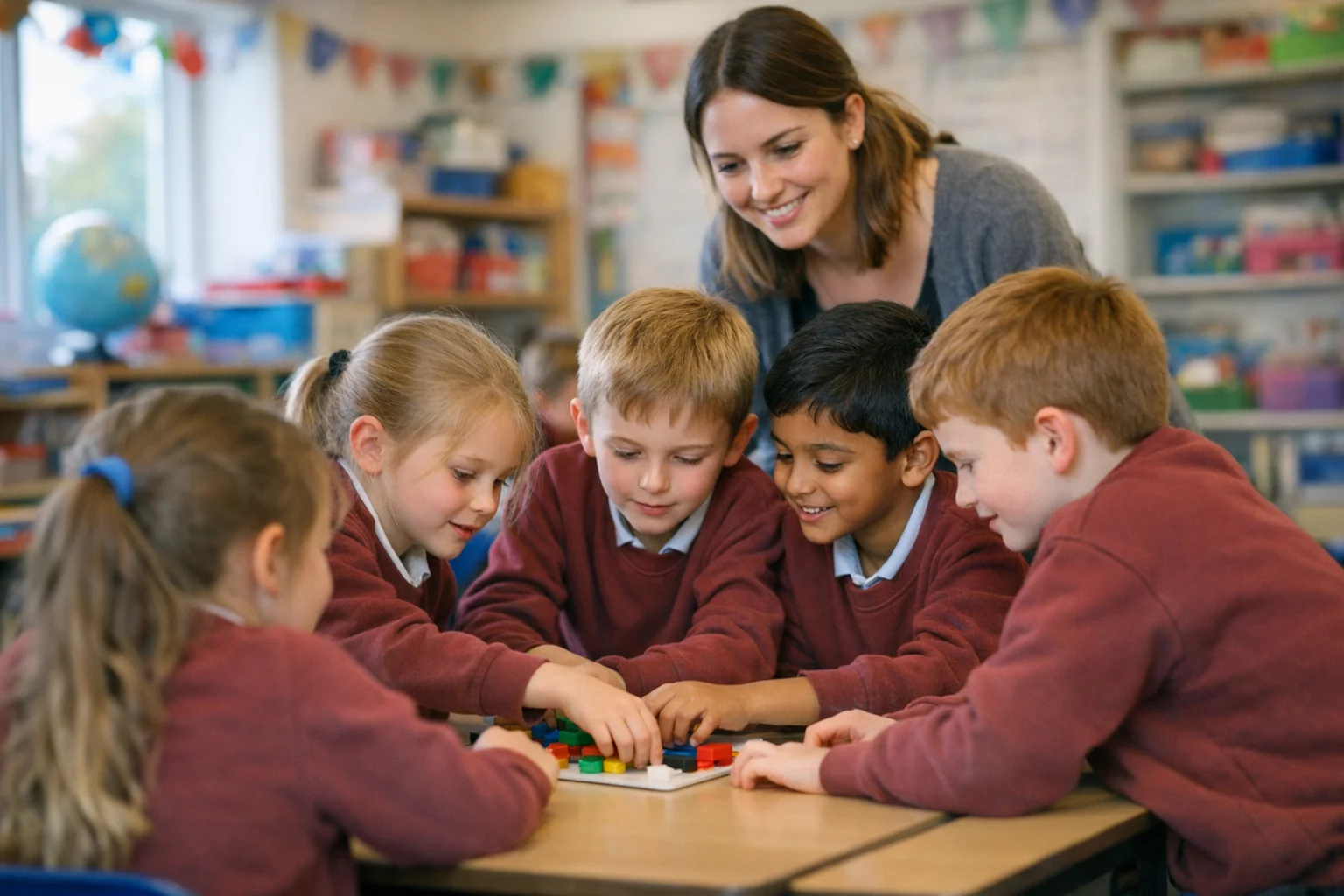

Discover the power of collaborative learning. Enhance student engagement, foster critical thinking, and promote effective teamwork.
It can be defined as learning that involves working as a group to solve a problem or understand an idea. When used effectively in the classroom, this type of learning ensures students remain engaged in content while thinking critically and sharing ideas with their peers.
When we cogitate on the end result of education, students have to be provided with skills that will prepare them for the world of work (Herrity, 2023).

However, before we step further into the value of collaborative learning, we need to bear in mind that, ‘A first step to learning how to collaborate, is learning how to “be together”.’ This means determining the norms that influence our behaviour (Collaboration: An Essential Skill for 21st Century Learners. 2019).
Collaborative learning involves students learning in pairs or small groups through different learning activities. As opposed to teacher-centred, it is student-centric providing children with a sense of autonomy over their educational process.
What makes collaboration in early childhood education vital is that when children share combined attention in activities, the process provides a major cognitive challenge in itself. (Hilkemeijer, 2023).
From experience, when including activities that accommodate for collaboration within the classroom setting, it is clearly evident that it improves students’ communication skills and serves as a motivating agent that drives their self-esteem and students appear to be more willing to take risks as they have the support of their peers.
The collaborative characteristic is about being social and co-constructed. Children and educators work together to identify ways of learning and understanding through sustained shared thinking and action (Collaborative, 2023).
Teaching children how to collaborate, and creating a variety of learning experiences which enable them to collaborate, is not only an excellent way to develop a self-motivated and adaptable classroom, but it also builds confidence in children as students.
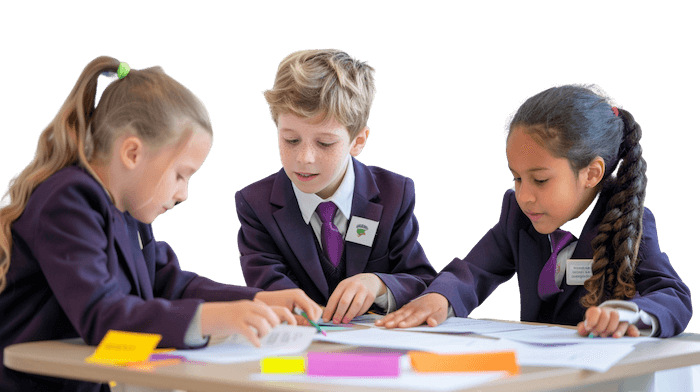
Creating an effective collaborative classroom is the absolute anchor of a learning powered class and is the launchpad to other design principles, such as reflection and building independence (Carlzon, n.d).
When students work together in collaborative groups, they can ask each other questions, share ideas, and give feedback to direct their own learning (Herrity, 2023). Examples of collaborative learning teams include:
(Herrity, 2023).The link below provides you with information on how ICT can be used as a strategy for Collaborative Learning in Early Childhood.Video: https://youtu.be/7F839H6rhTw
As teachers, 21st Century skills should be embedded in all aspects of teaching and learning. These skills encompass the 7C’s: communication, collaboration, critical thinking, and problem solving, creativity and innovation, change, citizenship, character, 3R’s: reading, writing and arithmetic and 2M’s: motivation and meta-cognition.
This is imperative for teaching and learning as students require the life skill of being an active participant in an inclusive and global community. As collaboration is one of the 21st Century skills, the merits of collaborative play provide students with life skills such as taking turns, sharing, following rules, negotiating, and compromising (How to Encourage Collaborative Play in the Preschool Classroom, 2023).
With this being said, collaborative learning is a twenty-first-century education trend with its main characteristic being the interaction among classmates (Zisopoulou, 2019: 337).
From the beginning, the teacher in conjunction with the students must decide on group norms, or agreements, as this will provide each student with a voice and provide accountability for all.
An idea is to have a poster of the shared agreements on display and when necessary, called to attention when a student or group needs a reminder (Alber, 2017).
Knowing when and how to listen is not a skill that comes naturally to all students in early childhood. For students to be competent listeners, they must be taught how to listen and ask good questions (Alber, 2017).
Collaboration is most definitely an exercise in curiosity as students learn the knack of asking questions that elicits deep learning and engagement. Questions that lend themselves to thoughtful answers are neutral and encourage participation (Collaboration: An Essential Skill for 21st Century Learners. 2019).
As a teacher, it is important to demonstrate that once someone in the group poses a question, a few seconds of silence are necessary, giving everyone time to think (Alber, 2017). To work effectively as a group, students must become highly competent listeners as collaboration requires more than adequate listening skills.
The one way in which students can learn this skill is by experiencing it when modelled for them by teachers, as well as through intentional instruction and practice in the classroom (Collaboration: An Essential Skill for 21st Century Learners. 2019).
During instructional time, students should be made aware that people who really listen offer empathy, refrain from cutting others off; are easy to like and respect. Children also need opportunities to restrain themselves from speaking to keep their attention on listening.
An idea would be to implement adding “Three, Then Me” to the class norms. This basically means that before one can speak again, they need to wait for three others to share first (Alber, 2017).
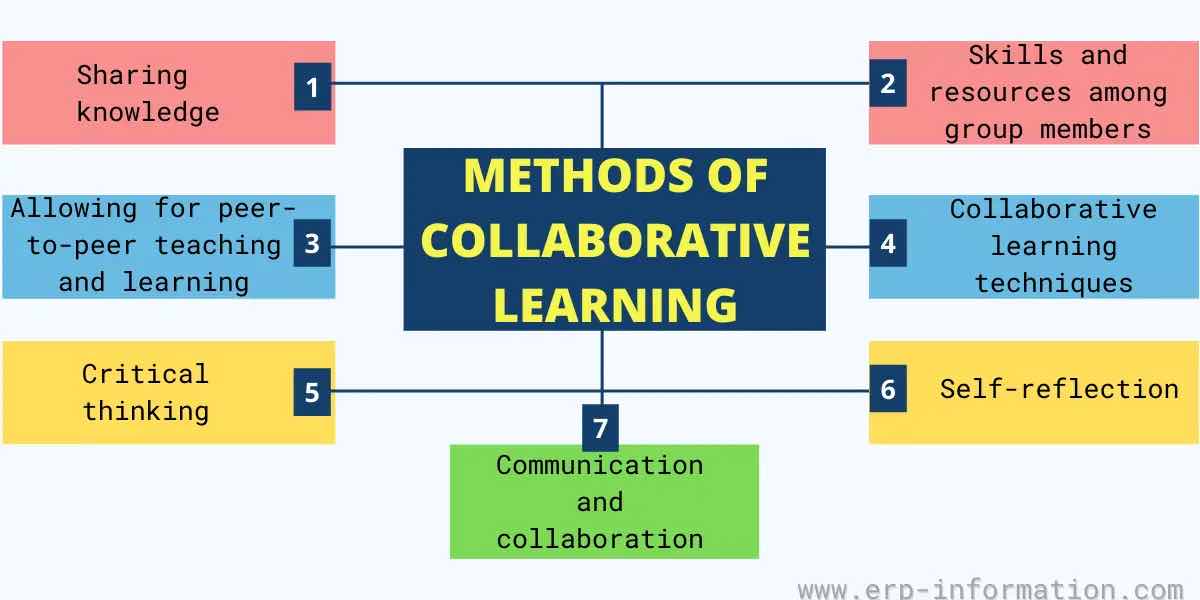 Learning Methods" id="" width="auto" height="auto">
Learning Methods" id="" width="auto" height="auto">As collaboration requires negotiation skills, it is important that students are taught the art of negotiation. A good negotiator would have mastered active listening skills, is able to regulate themselves to the pace of the group discussion and group work, is responsive to change, and is able to recognise and articulate collective ideas of the group agreement (Collaboration: An Essential Skill for 21st Century Learners. 2019).
A teacher’s role is to make students aware that sometimes even though a group member who speaks the loudest and most frequently may get the most said, but it does not mean that they will convince a group of anything.
The teacher should inform students that a good negotiator listens well, shows patience and flexibility, points out shared ideas and areas of group agreement, and thinks under pressure (Alber, 2017).
The teacher should be designing collaborative learning activities that fosters student engagement. From my experience, there is a marked improvement in students’ social skills as there is active student participation. The teachers planning should include problem-based learning.
Herrity (2023), provides further suggestions for the implementation of collaborative learning:
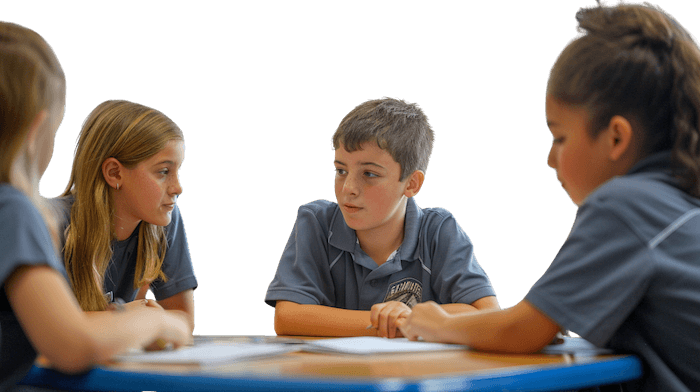
Collaborative learning allows students to learn in an enjoyable and effective way. It also helps students develop indispensable skills like communication and problem-solving (Herrity, 2023). Collaborative learning has the following benefits:
1. Improves problem-solving skills
Collaborative learning projects often require groups to complete a task or solve a problem. For activities such as these, the students must discuss and analyse different ideas to find the best solution.
As they work through a problem or an assignment as a group, it assists students to develop their own critical thinking skills (Herrity, 2023) whilst fostering active participation.
2. Improves communication, confidence, encourages social interaction and engagement
Collaborative learning depends on communicating effectively to complete a task where students will use their verbal communication skills to share ideas, explain concepts and provide clear and concise feedback (Herrity, 2023).
This requires students to interact as a team using eye contact (considering diverse cultures), verbal communication and social cues. Members of various personality types learn to share and listen by working towards a common goal.
Throughout this process, students practice and develop social skills such as active listening, empathy, and respect. Another key point is that the social skills attained during collaboration will help students form and maintain strong personal and professional relationships in the world of work.
Similarly, collaborative tasks encourage passive students to be more actively involved in the project or discussion because the team expects their input.
Notably, students who become more involved in their own learning often show higher achievement (Herrity, 2023) and hence the quote by Johnson and Johnson is most fitting ‘Fact: Collaborative learning has been shown to result in higher student achievement, higher self-esteem, and higher motivation’ (2009 in edutopia.org).
The latter prepares students for real life social and employment situations (Collaborative Learning, 2023). This type of learning is beneficial for introverted students, as team members encourage more reserved members to share their opinions and contribute to discussions.
Consequently, more introverted team members realise their value to the group. Having a supportive group atmosphere can assist them to build confidence. (Herrity, 2023).
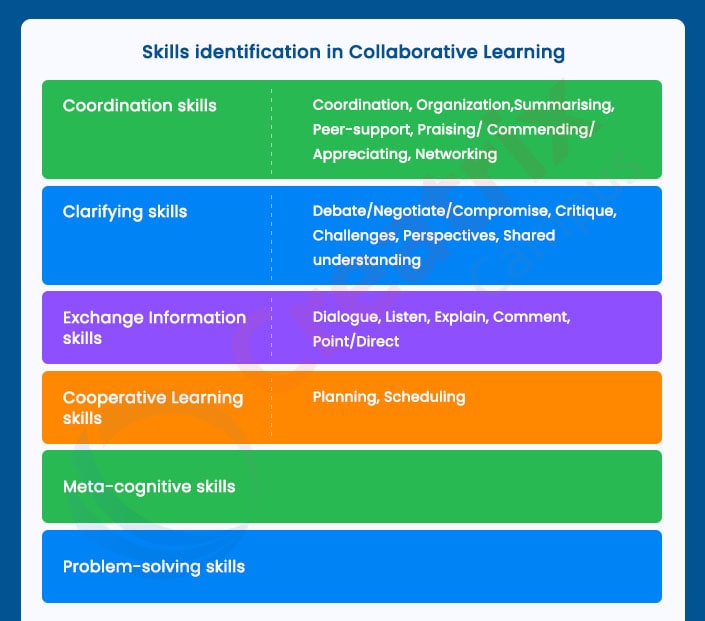
3. Promotes diversity
Collaborative learning brings students of various backgrounds, beliefs, education levels and ages together which is equally important. In the process of determining a solution, students hear a variety of explanations from their peers with different opinions and perspectives.
Their peers might present innovative ideas and perspectives that are unique to their culture or upbringing. As a result, collaborative learning can encourage open-mindedness and acceptance in the learning environment (Herrity, 2023), and henceforth provides exposure to and an increase in understanding of diverse perspectives (Collaborative Learning, 2023).
Given these points, in a time where the focus on inclusive education is paramount, this type of learning is most conducive.
5. Inspires creativity
Combining different views and ideas can result in creative solutions to collaborative learning assignments. One individual's idea or suggestion might inspire a new and creative idea from their team members.
Collaborative learning encourages this type of creative thinking because many ideas and viewpoints often help team members discover an effective solution to a problem (Herrity, 2023).
6. Creates trust
Collaborative learning groups work together to reach their goal, relying on each other for success. Thus, they need to learn to trust each other. Students who build trust in collaborative teams can form a more cohesive classroom bond knowing they support each other's learning.
This trust can transfer to future workplace interactions, which could lead to increased productivity and morale (Herrity, 2023).
7. Develops critical-thinking skills
This type of learning can encourage participants to think at a higher level. In collaborative projects, students analyse and discuss information where they must solve a problem or complete a task.
Because these groups require team members to explain their ideas and interpret and assess the ideas of others, students can improve their critical-thinking skills through collaborative tasks.
Critical thinking is important for resolving conflicts, brainstorming strategies, creating content, and evaluating ideas and results (Herrity, 2023).
8. Builds relationships
Collaborative learning can create new friendships and strengthen existing relationships. It often brings together individuals who would not have met or worked with each other under normal circumstances.
As team members spend time working on a collaborative learning project together, they get to know each other better.
This can lead to positive personal relationships and higher morale. If the teacher is participating in or leading the collaborative learning effort, it can help that individual understand their students better and strengthen mentor relationships (Herrity, 2023).

The following are ideas on how collaborative play can be promoted within the classroom (How to Encourage Collaborative Play in the Preschool Classroom, 2023):
1) Art Projects
Collaborative art projects are an engaging tool for encouraging students to work together. One collaborative art project to consider is a Finger Paint Art Mural. The children can make their marks and watch the masterpiece come to life.
2) Games
Games are a wonderful way to promote collaborative play in early childhood education. The following are suggestions:
3) Music
Collaboratively creating music is another way to get students in tune with each other. A classroom rhythm set is perfect for preschool musicians. Students love exploring new musical sounds and practicing teamwork (How to Encourage Collaborative Play in the Preschool Classroom, 2023).
4) Building
Building together is also considered collaborative play. Working together to build the perfect tower requires negotiation and teamwork.
Students must be motivated to build the tallest tower, the longest tower; so that they have a common goal to work towards (How to Encourage Collaborative Play in the Preschool Classroom, 2023).
5) Dramatic Play
A final idea for promoting collaborative play is encouraging dramatic play in small groups or pairs, such as making meals together in a play kitchen or playhouse.
When students participate in these dramatic play activities, they must be encouraged to take turns with distinct roles. These activities will foster teamwork and negotiation and help children to learn how to compromise and share and in so doing, learn valuable life skills (How to Encourage Collaborative Play in the Preschool Classroom, 2023).
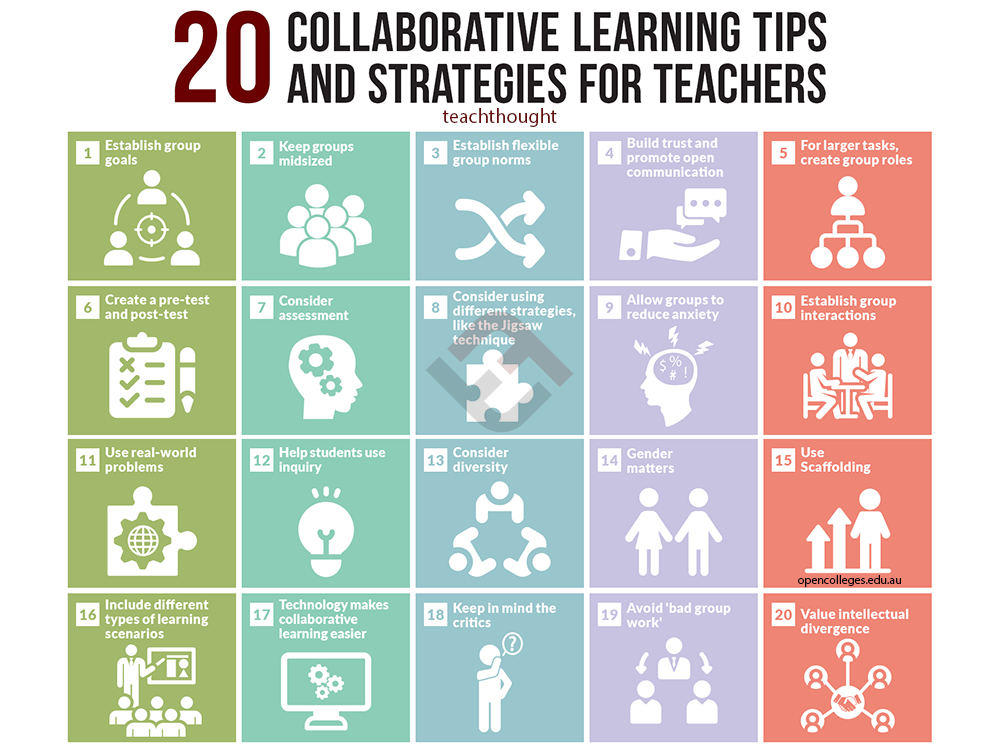
In the era that we are living, it goes without saying that schools must prepare students for the 21st -century workforce where they emerge from their education as highly collaborative and curious, life-long learners, who are better equipped to confidently conquer hurdles and tread beyond their comfort zone (Collaboration: An Essential Skill for 21st Century Learners, 2019).
At this present time, the 21st century workplace is a collaborative one, which means its workforce must have the skills to collaborate effectively and to respond to challenges with confidence, creativity, and thoughtful action.
Collaboration pools skills, knowledge, and creativity increasing innovation and the success of a project.
As the modern workplace is becoming increasingly global, it becomes imperative that the schools and educators cultivate collaborative, inclusive, and culturally intelligent 21st-century students where they learn collaboration skills throughout their educational journey as collaboration, as a skill, is something that must be learned (Collaboration: An Essential Skill for 21st Century Learners, 2019).

According to Alber (2017), when it comes to creating a highly collaborative classroom, teachers need to frequently model listening, paraphrasing, artful questioning, and negotiating.
During the learning process, collaborative learning environments facilitate active learning. In this period of time, the teacher stimulates collaborative learning processes which in turn encourages higher-level thinking.
As the students’ self-esteem improves, so does their sense of academic achievement. Thus, it is apparent that through teaching students the skill of collaboration, teachers not only empower them to become the architect of their own journey but embolden them to confidently embrace life beyond school.
After all, as teachers, is it not our goal to mould students to have the skills and capabilities where they can function independently and within a team?
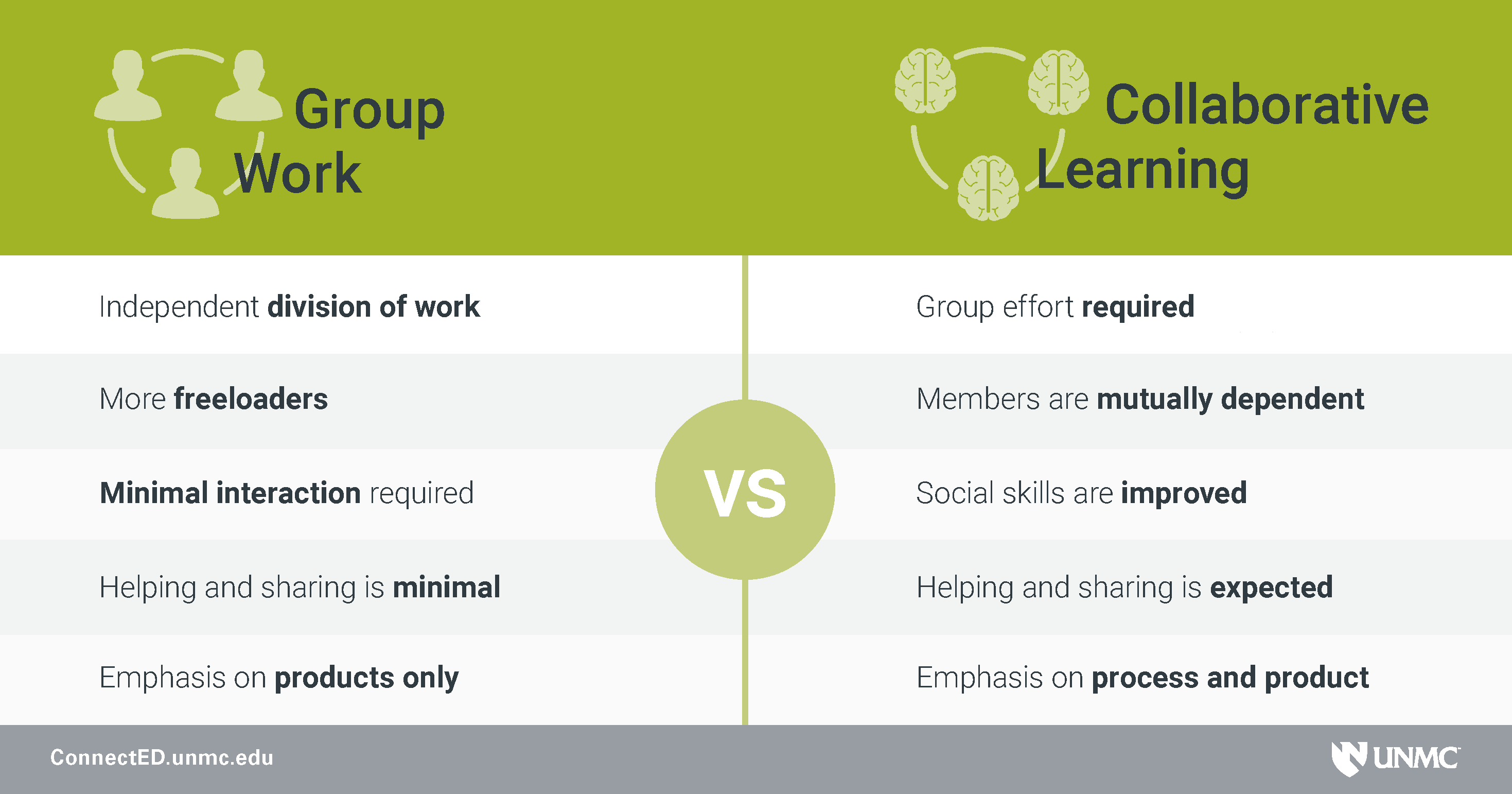
Alber, R. 2017. Deeper Learning: A Collaborative Classroom Is Key. [Online] In Edutopia. Available at: https://www.edutopia.org/blog/deeper-learning-collaboration-key-rebecca-alber. [Accessed on 9 May 2023].
Carlzon, B. Not dated. [Online]. Create a variety of learning experiences which enable children to collaborate. Available at: https://learningpowerkids.com/collaborative-learning/. [Accessed on 7 May 2023]
Collaboration: An Essential Skill for 21st Century Learners. 2019. [Online]. In Selwyn School. Available at: https://selwynschool.org/collaboration-an-essential-skill-for-21st-century-learners/. [Accessed on 9 May 2023]
Collaborative Learning. 2023. [Online]. Available at: https://teaching.cornell.edu/teaching-resources/active-collaborative-learning/collaborative-learning. [Accessed on 7 May 2023]
Collaborative. 2023. In Queensland Government. Early Childhood Education and Care. [Online]. Available at: https://earlychildhood.qld.gov.au/early-years/age-appropriate-pedagogies/characteristics/collaborative. [Accessed on 7 May 2023]
Johnson and Johnson, 2009. In Professional Learning Communities. Collaborative learning quote via www.Edutopia.org. [Pinterest] https://za.pinterest.com/pin/collaborative-learning-quote-via-wwwedutopiaorg--137500594846296809/. [Accessed: 09.05. 2023]
Herrity, J. 2023. 11 Benefits of Collaborative Learning (Plus Tips To Use It). In Indeed. [Online]. Available at: https://www.indeed.com/career-advice/career-development/benefits-of-collaborative-learning. [Accessed on 7 May 2023]
Hilkemeijer, M. 2023. ICT Solutions Australia 3 Ways for teachers to embed collaborative learning with ease in preschool today. [Online]. Available at: https://www.ictesolutions.com.au/blog/3-ways-for-teachers-to-embed-collaborative-learning-with-ease-in-preschool-today/. [Accessed on 6 May 2023]
How to Encourage Collaborative Play in the Preschool Classroom. 2023. In Kaplan Learning Centre. [Online]. Available at: https://blog.kaplanco.com/ii/collaborative-play. [Accessed on 7 May 2023]
Zisopoulou, E. 2019. Collaborative learning in kindergarten: Challenge or reality? Erken Çocukluk Çalışmaları Dergisi, 3(2), 335-351. [Online]. Available at: doi:http://dx.doi.org/10.24130/eccd-jecs.1967201932113. [Accessed on 7 May 2023]
It can be defined as learning that involves working as a group to solve a problem or understand an idea. When used effectively in the classroom, this type of learning ensures students remain engaged in content while thinking critically and sharing ideas with their peers.
When we cogitate on the end result of education, students have to be provided with skills that will prepare them for the world of work (Herrity, 2023).

However, before we step further into the value of collaborative learning, we need to bear in mind that, ‘A first step to learning how to collaborate, is learning how to “be together”.’ This means determining the norms that influence our behaviour (Collaboration: An Essential Skill for 21st Century Learners. 2019).
Collaborative learning involves students learning in pairs or small groups through different learning activities. As opposed to teacher-centred, it is student-centric providing children with a sense of autonomy over their educational process.
What makes collaboration in early childhood education vital is that when children share combined attention in activities, the process provides a major cognitive challenge in itself. (Hilkemeijer, 2023).
From experience, when including activities that accommodate for collaboration within the classroom setting, it is clearly evident that it improves students’ communication skills and serves as a motivating agent that drives their self-esteem and students appear to be more willing to take risks as they have the support of their peers.
The collaborative characteristic is about being social and co-constructed. Children and educators work together to identify ways of learning and understanding through sustained shared thinking and action (Collaborative, 2023).
Teaching children how to collaborate, and creating a variety of learning experiences which enable them to collaborate, is not only an excellent way to develop a self-motivated and adaptable classroom, but it also builds confidence in children as students.

Creating an effective collaborative classroom is the absolute anchor of a learning powered class and is the launchpad to other design principles, such as reflection and building independence (Carlzon, n.d).
When students work together in collaborative groups, they can ask each other questions, share ideas, and give feedback to direct their own learning (Herrity, 2023). Examples of collaborative learning teams include:
(Herrity, 2023).The link below provides you with information on how ICT can be used as a strategy for Collaborative Learning in Early Childhood.Video: https://youtu.be/7F839H6rhTw
As teachers, 21st Century skills should be embedded in all aspects of teaching and learning. These skills encompass the 7C’s: communication, collaboration, critical thinking, and problem solving, creativity and innovation, change, citizenship, character, 3R’s: reading, writing and arithmetic and 2M’s: motivation and meta-cognition.
This is imperative for teaching and learning as students require the life skill of being an active participant in an inclusive and global community. As collaboration is one of the 21st Century skills, the merits of collaborative play provide students with life skills such as taking turns, sharing, following rules, negotiating, and compromising (How to Encourage Collaborative Play in the Preschool Classroom, 2023).
With this being said, collaborative learning is a twenty-first-century education trend with its main characteristic being the interaction among classmates (Zisopoulou, 2019: 337).
From the beginning, the teacher in conjunction with the students must decide on group norms, or agreements, as this will provide each student with a voice and provide accountability for all.
An idea is to have a poster of the shared agreements on display and when necessary, called to attention when a student or group needs a reminder (Alber, 2017).
Knowing when and how to listen is not a skill that comes naturally to all students in early childhood. For students to be competent listeners, they must be taught how to listen and ask good questions (Alber, 2017).
Collaboration is most definitely an exercise in curiosity as students learn the knack of asking questions that elicits deep learning and engagement. Questions that lend themselves to thoughtful answers are neutral and encourage participation (Collaboration: An Essential Skill for 21st Century Learners. 2019).
As a teacher, it is important to demonstrate that once someone in the group poses a question, a few seconds of silence are necessary, giving everyone time to think (Alber, 2017). To work effectively as a group, students must become highly competent listeners as collaboration requires more than adequate listening skills.
The one way in which students can learn this skill is by experiencing it when modelled for them by teachers, as well as through intentional instruction and practice in the classroom (Collaboration: An Essential Skill for 21st Century Learners. 2019).
During instructional time, students should be made aware that people who really listen offer empathy, refrain from cutting others off; are easy to like and respect. Children also need opportunities to restrain themselves from speaking to keep their attention on listening.
An idea would be to implement adding “Three, Then Me” to the class norms. This basically means that before one can speak again, they need to wait for three others to share first (Alber, 2017).
 Learning Methods" id="" width="auto" height="auto">
Learning Methods" id="" width="auto" height="auto">As collaboration requires negotiation skills, it is important that students are taught the art of negotiation. A good negotiator would have mastered active listening skills, is able to regulate themselves to the pace of the group discussion and group work, is responsive to change, and is able to recognise and articulate collective ideas of the group agreement (Collaboration: An Essential Skill for 21st Century Learners. 2019).
A teacher’s role is to make students aware that sometimes even though a group member who speaks the loudest and most frequently may get the most said, but it does not mean that they will convince a group of anything.
The teacher should inform students that a good negotiator listens well, shows patience and flexibility, points out shared ideas and areas of group agreement, and thinks under pressure (Alber, 2017).
The teacher should be designing collaborative learning activities that fosters student engagement. From my experience, there is a marked improvement in students’ social skills as there is active student participation. The teachers planning should include problem-based learning.
Herrity (2023), provides further suggestions for the implementation of collaborative learning:

Collaborative learning allows students to learn in an enjoyable and effective way. It also helps students develop indispensable skills like communication and problem-solving (Herrity, 2023). Collaborative learning has the following benefits:
1. Improves problem-solving skills
Collaborative learning projects often require groups to complete a task or solve a problem. For activities such as these, the students must discuss and analyse different ideas to find the best solution.
As they work through a problem or an assignment as a group, it assists students to develop their own critical thinking skills (Herrity, 2023) whilst fostering active participation.
2. Improves communication, confidence, encourages social interaction and engagement
Collaborative learning depends on communicating effectively to complete a task where students will use their verbal communication skills to share ideas, explain concepts and provide clear and concise feedback (Herrity, 2023).
This requires students to interact as a team using eye contact (considering diverse cultures), verbal communication and social cues. Members of various personality types learn to share and listen by working towards a common goal.
Throughout this process, students practice and develop social skills such as active listening, empathy, and respect. Another key point is that the social skills attained during collaboration will help students form and maintain strong personal and professional relationships in the world of work.
Similarly, collaborative tasks encourage passive students to be more actively involved in the project or discussion because the team expects their input.
Notably, students who become more involved in their own learning often show higher achievement (Herrity, 2023) and hence the quote by Johnson and Johnson is most fitting ‘Fact: Collaborative learning has been shown to result in higher student achievement, higher self-esteem, and higher motivation’ (2009 in edutopia.org).
The latter prepares students for real life social and employment situations (Collaborative Learning, 2023). This type of learning is beneficial for introverted students, as team members encourage more reserved members to share their opinions and contribute to discussions.
Consequently, more introverted team members realise their value to the group. Having a supportive group atmosphere can assist them to build confidence. (Herrity, 2023).

3. Promotes diversity
Collaborative learning brings students of various backgrounds, beliefs, education levels and ages together which is equally important. In the process of determining a solution, students hear a variety of explanations from their peers with different opinions and perspectives.
Their peers might present innovative ideas and perspectives that are unique to their culture or upbringing. As a result, collaborative learning can encourage open-mindedness and acceptance in the learning environment (Herrity, 2023), and henceforth provides exposure to and an increase in understanding of diverse perspectives (Collaborative Learning, 2023).
Given these points, in a time where the focus on inclusive education is paramount, this type of learning is most conducive.
5. Inspires creativity
Combining different views and ideas can result in creative solutions to collaborative learning assignments. One individual's idea or suggestion might inspire a new and creative idea from their team members.
Collaborative learning encourages this type of creative thinking because many ideas and viewpoints often help team members discover an effective solution to a problem (Herrity, 2023).
6. Creates trust
Collaborative learning groups work together to reach their goal, relying on each other for success. Thus, they need to learn to trust each other. Students who build trust in collaborative teams can form a more cohesive classroom bond knowing they support each other's learning.
This trust can transfer to future workplace interactions, which could lead to increased productivity and morale (Herrity, 2023).
7. Develops critical-thinking skills
This type of learning can encourage participants to think at a higher level. In collaborative projects, students analyse and discuss information where they must solve a problem or complete a task.
Because these groups require team members to explain their ideas and interpret and assess the ideas of others, students can improve their critical-thinking skills through collaborative tasks.
Critical thinking is important for resolving conflicts, brainstorming strategies, creating content, and evaluating ideas and results (Herrity, 2023).
8. Builds relationships
Collaborative learning can create new friendships and strengthen existing relationships. It often brings together individuals who would not have met or worked with each other under normal circumstances.
As team members spend time working on a collaborative learning project together, they get to know each other better.
This can lead to positive personal relationships and higher morale. If the teacher is participating in or leading the collaborative learning effort, it can help that individual understand their students better and strengthen mentor relationships (Herrity, 2023).

The following are ideas on how collaborative play can be promoted within the classroom (How to Encourage Collaborative Play in the Preschool Classroom, 2023):
1) Art Projects
Collaborative art projects are an engaging tool for encouraging students to work together. One collaborative art project to consider is a Finger Paint Art Mural. The children can make their marks and watch the masterpiece come to life.
2) Games
Games are a wonderful way to promote collaborative play in early childhood education. The following are suggestions:
3) Music
Collaboratively creating music is another way to get students in tune with each other. A classroom rhythm set is perfect for preschool musicians. Students love exploring new musical sounds and practicing teamwork (How to Encourage Collaborative Play in the Preschool Classroom, 2023).
4) Building
Building together is also considered collaborative play. Working together to build the perfect tower requires negotiation and teamwork.
Students must be motivated to build the tallest tower, the longest tower; so that they have a common goal to work towards (How to Encourage Collaborative Play in the Preschool Classroom, 2023).
5) Dramatic Play
A final idea for promoting collaborative play is encouraging dramatic play in small groups or pairs, such as making meals together in a play kitchen or playhouse.
When students participate in these dramatic play activities, they must be encouraged to take turns with distinct roles. These activities will foster teamwork and negotiation and help children to learn how to compromise and share and in so doing, learn valuable life skills (How to Encourage Collaborative Play in the Preschool Classroom, 2023).

In the era that we are living, it goes without saying that schools must prepare students for the 21st -century workforce where they emerge from their education as highly collaborative and curious, life-long learners, who are better equipped to confidently conquer hurdles and tread beyond their comfort zone (Collaboration: An Essential Skill for 21st Century Learners, 2019).
At this present time, the 21st century workplace is a collaborative one, which means its workforce must have the skills to collaborate effectively and to respond to challenges with confidence, creativity, and thoughtful action.
Collaboration pools skills, knowledge, and creativity increasing innovation and the success of a project.
As the modern workplace is becoming increasingly global, it becomes imperative that the schools and educators cultivate collaborative, inclusive, and culturally intelligent 21st-century students where they learn collaboration skills throughout their educational journey as collaboration, as a skill, is something that must be learned (Collaboration: An Essential Skill for 21st Century Learners, 2019).

According to Alber (2017), when it comes to creating a highly collaborative classroom, teachers need to frequently model listening, paraphrasing, artful questioning, and negotiating.
During the learning process, collaborative learning environments facilitate active learning. In this period of time, the teacher stimulates collaborative learning processes which in turn encourages higher-level thinking.
As the students’ self-esteem improves, so does their sense of academic achievement. Thus, it is apparent that through teaching students the skill of collaboration, teachers not only empower them to become the architect of their own journey but embolden them to confidently embrace life beyond school.
After all, as teachers, is it not our goal to mould students to have the skills and capabilities where they can function independently and within a team?

Alber, R. 2017. Deeper Learning: A Collaborative Classroom Is Key. [Online] In Edutopia. Available at: https://www.edutopia.org/blog/deeper-learning-collaboration-key-rebecca-alber. [Accessed on 9 May 2023].
Carlzon, B. Not dated. [Online]. Create a variety of learning experiences which enable children to collaborate. Available at: https://learningpowerkids.com/collaborative-learning/. [Accessed on 7 May 2023]
Collaboration: An Essential Skill for 21st Century Learners. 2019. [Online]. In Selwyn School. Available at: https://selwynschool.org/collaboration-an-essential-skill-for-21st-century-learners/. [Accessed on 9 May 2023]
Collaborative Learning. 2023. [Online]. Available at: https://teaching.cornell.edu/teaching-resources/active-collaborative-learning/collaborative-learning. [Accessed on 7 May 2023]
Collaborative. 2023. In Queensland Government. Early Childhood Education and Care. [Online]. Available at: https://earlychildhood.qld.gov.au/early-years/age-appropriate-pedagogies/characteristics/collaborative. [Accessed on 7 May 2023]
Johnson and Johnson, 2009. In Professional Learning Communities. Collaborative learning quote via www.Edutopia.org. [Pinterest] https://za.pinterest.com/pin/collaborative-learning-quote-via-wwwedutopiaorg--137500594846296809/. [Accessed: 09.05. 2023]
Herrity, J. 2023. 11 Benefits of Collaborative Learning (Plus Tips To Use It). In Indeed. [Online]. Available at: https://www.indeed.com/career-advice/career-development/benefits-of-collaborative-learning. [Accessed on 7 May 2023]
Hilkemeijer, M. 2023. ICT Solutions Australia 3 Ways for teachers to embed collaborative learning with ease in preschool today. [Online]. Available at: https://www.ictesolutions.com.au/blog/3-ways-for-teachers-to-embed-collaborative-learning-with-ease-in-preschool-today/. [Accessed on 6 May 2023]
How to Encourage Collaborative Play in the Preschool Classroom. 2023. In Kaplan Learning Centre. [Online]. Available at: https://blog.kaplanco.com/ii/collaborative-play. [Accessed on 7 May 2023]
Zisopoulou, E. 2019. Collaborative learning in kindergarten: Challenge or reality? Erken Çocukluk Çalışmaları Dergisi, 3(2), 335-351. [Online]. Available at: doi:http://dx.doi.org/10.24130/eccd-jecs.1967201932113. [Accessed on 7 May 2023]